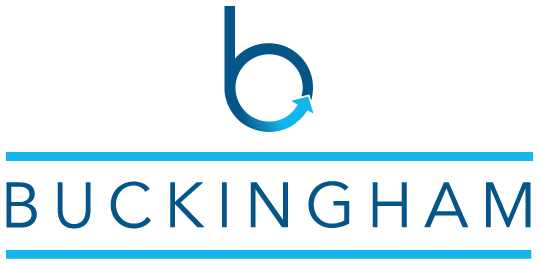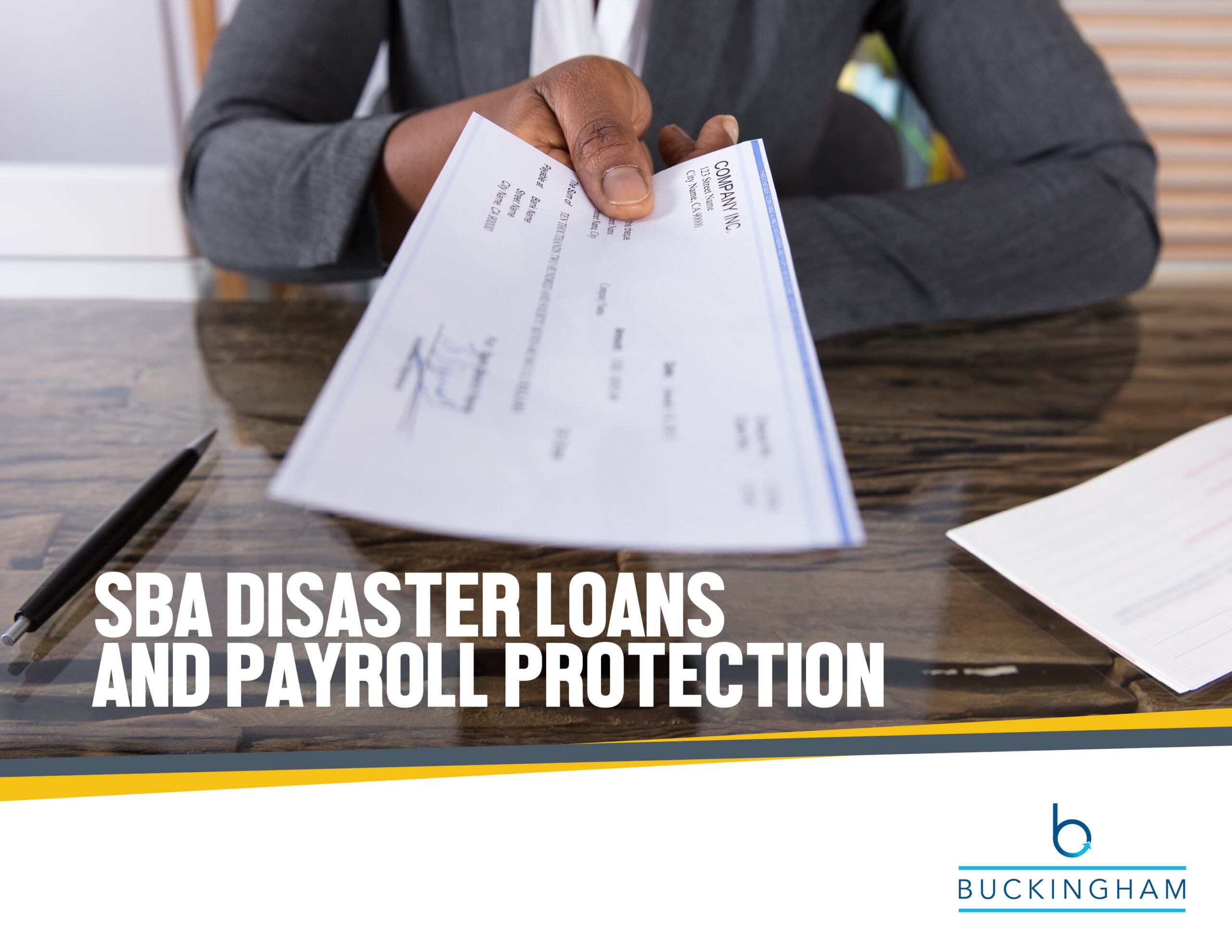Click the image below to access the “What you need to know about SBA Disaster Loans and the Payroll Protection Program” e-book:
The President recently signed into law a series of robust stimulus packages to provide support to individuals and businesses impacted by the COVID-19 outbreak. The most helpful resources come from the expansions of two key SBA loan programs: The Economic Injury Disaster Loan (EIDL) and 7(a) Payroll Protection Loan. Although distinct programs, both come with extremely generous forgiveness provisions that can essentially turn loans into grants—perhaps a once in a lifetime opportunity. The following explains the key provisions of these programs, including eligibility requirements, loan terms, and the documentation required for applying.
Although we have dedicated much time to analyze and interpret the provisions in this new legislation to provide guidance to clients, the legislation was passed quickly to address the immediate impact of COVID-19 and leaves many unanswered questions and uncertainties. Typically, Regulations are issued to fill these gaps and provide answers. However, there are currently no final regulations to help navigate the law’s application. We will continue to monitor the situation and issue updates as new information becomes available.
THE SUMMARY:
Both programs provide significant financial support to small business with repayment deferral terms and potential forgiveness, but have distinct purposes.
The EIDL is designed for business who have suffered an actual substantial economic injury as a result of COVID-19. Under the CARES Act expansion, eligible small businesses can request a completely forgivable cash advance even if the loan application is denied. These secured, low-interest loans with smaller caps and longer repayment options are good for businesses with lower overall capital requirements and an immediate need for liquidity. Additionally, EIDLs can be refinanced into a PPP loan which is ultimately forgivable provided the loan conditions are met.
The 7(a) Payroll Protection Program (PPP) contains remarkable incentives for retaining employees, as all amounts spent on payroll and rent/utilities can be forgiven. If timed right, employers can receive up to 2.5 times adjusted average monthly payroll based on payroll during the one-year period before the loan is made. The financing is unsecured and no personal guarantees are required. Employers can receive 2.5 months of payroll expenses paid by the Federal government, perhaps a once in a lifetime opportunity. Borrowers must spend the proceeds on qualified costs within 8 weeks after the loan is made to qualify for forgiveness.
THE DETAILS:
Economic Injury Disaster Loan Program
Eligible Businesses
Generally, “small businesses concerns” are eligible, which the SBA determines based on a business’s employee headcount and annual revenues. However, the CARES Act simplified things by extending eligibility to the following: a) Businesses with less than 500 employees; b) Sole proprietorships with or without employees; c) Independent Contractors; d) Cooperatives and employee owned businesses; and e) Other self-employed individuals.
Note that affiliation rules may apply to include employees of subsidiaries of or other commonly controlled companies. Additionally, employers with more than 500 employees may be eligible depending on the industry the business is involved in. Check out this chart here to see if your business is eligible: Table of Small Business Size Standards.
Loan Terms
Eligible businesses can take out up to $2M based on the economic injury suffered by the borrower at 3.75% interest (2.75% if a nonprofit) with 30-year repayment term. Unlike the PPP loans, the amount is based on the individual borrower’s ability (or inability) to pay its obligations and essential expenses. Collateral is required for loans over $25,000, and a personal guarantee is required for loans over $200,000. The loan can be used for payroll, sick leave, fixed debts, accounts payable, and other bills that cannot be paid due to COVID-19.
Borrowers can also request a forgivable cash advance of up to $10,000 to cover these expenses, which the SBA must distribute within three days. The loans cannot be used to refinance debts incurred prior to COVID-19, to pay other federal loans, tax penalties or civil/criminal fines.
Borrowers may apply online here or contact the SBA directly at (800) 659-2955 or disastercustomerservice@sba.gov.
7(a) Payroll Protection Program (PPP)
Eligible Businesses
Any small business concern consistent with the above (profit or nonprofit) with 500 or fewer employees or that meet the size standard for the particular industry the business operates in (see chart above). Further, the CARES Act also expanded eligibility for certain industries. For example, for “accommodation and food service businesses” the threshold is 500 employees per location rather than total employees.
Loan Terms
Borrowers are guaranteed 2.5 times average monthly payroll costs for the previous year ending on the date of the loan. The rate of interest is 1% with a 2-year repayment term rather than the 10-year term initially enacted. Once the loan is made, the proceeds must be spent on qualified expenses within 8 weeks to qualify for loan forgiveness. 25% of the loan may be spent on rent, utilities, mortgage interest, debts, etc. But 75% of the loan must be used for “payroll costs” which are calculated on a gross basis and include nearly all forms of compensation paid to employees, including salary, wages, cash tips, paid time off, severance, healthcare benefits, and employee state and local taxes. Excluded, however, is cash compensation in excess of $100k annualized (calculation does not include non-cash benefits), Social Security / Medicare taxes, federal withholding taxes, and payments to independent contractors or sole proprietors. Independent contractors and sole proprietors are eligible to apply for their own PPP loans. The loan amount may also be offset by any loans taken under the EIDL Program. Unlike the EIDL program, PPP loans do not require collateral or personal guarantees. The borrower must certify in good faith that it paid employees or contractors, the loan is necessary to continue operations during the COVID-19 and will be used to retain workers or pay rent, utilities, or other critical expenses.
If you follow the above conditions (and can provide the relevant supportive documentation), the debt will ultimately be forgiven tax-free to the extent the borrower does not reduce employment or cut compensation by more than 25%. However, there are exceptions, allowing full forgiveness, if the layoffs and salary reductions are returned to the earlier levels by June 30.
[1] COMMENT: If the business did not exist last year, then calculate using average monthly payroll costs for the period January 1, 2020 through February 29, 2020.
CONCLUSION:
These programs give critical funding with very little downside. Please contact us if we can assist you with the application process. For the EIDL program, visit SBA’s website to apply here. For PPP loans, the first thing to do is make immediate contact with a lender you have a relationship with. Lenders will likely be inundated with requests for these loans, so contacting your lender early should streamline the process. A sample application form for the PPP loan is available here.
We are here to help during these trying times. If you need assistance applying for these loans, please contact us.
To prepare of the SBA loan application process, you should begin assembling the following documentation to establish payroll costs and other eligible expenses:
- 2019 IRS Quarterly 940, 941 or 944 payroll tax reports
- Last 12 months of Payroll Reports beginning with your last payroll date that shows: (a) Gross wages for each employee, (b) Paid time off for each employee, (c) Vacation pay for each employee, (d) Family medical leave pay for each employee, and (e) State and Local taxes assessed on the employee’s compensation for each employee.
- If applicable, PEO or other payroll provider documentation that indicates the amount of wages and payroll taxes reported to the IRS for the borrower’s employees.
- Documentation showing total of all health insurance premiums paid by the Company Owner under a group health plan; and
- Documents showing the sum of all retirement plan funding that was paid by the Company Owner (does not include funding that came from the employee’s out of their paycheck deferrals).
- Spreadsheet summarizing the last 12 months of payroll (for the period of April 1, 2019 through March 31, 2020) to be submitted to your bank.




